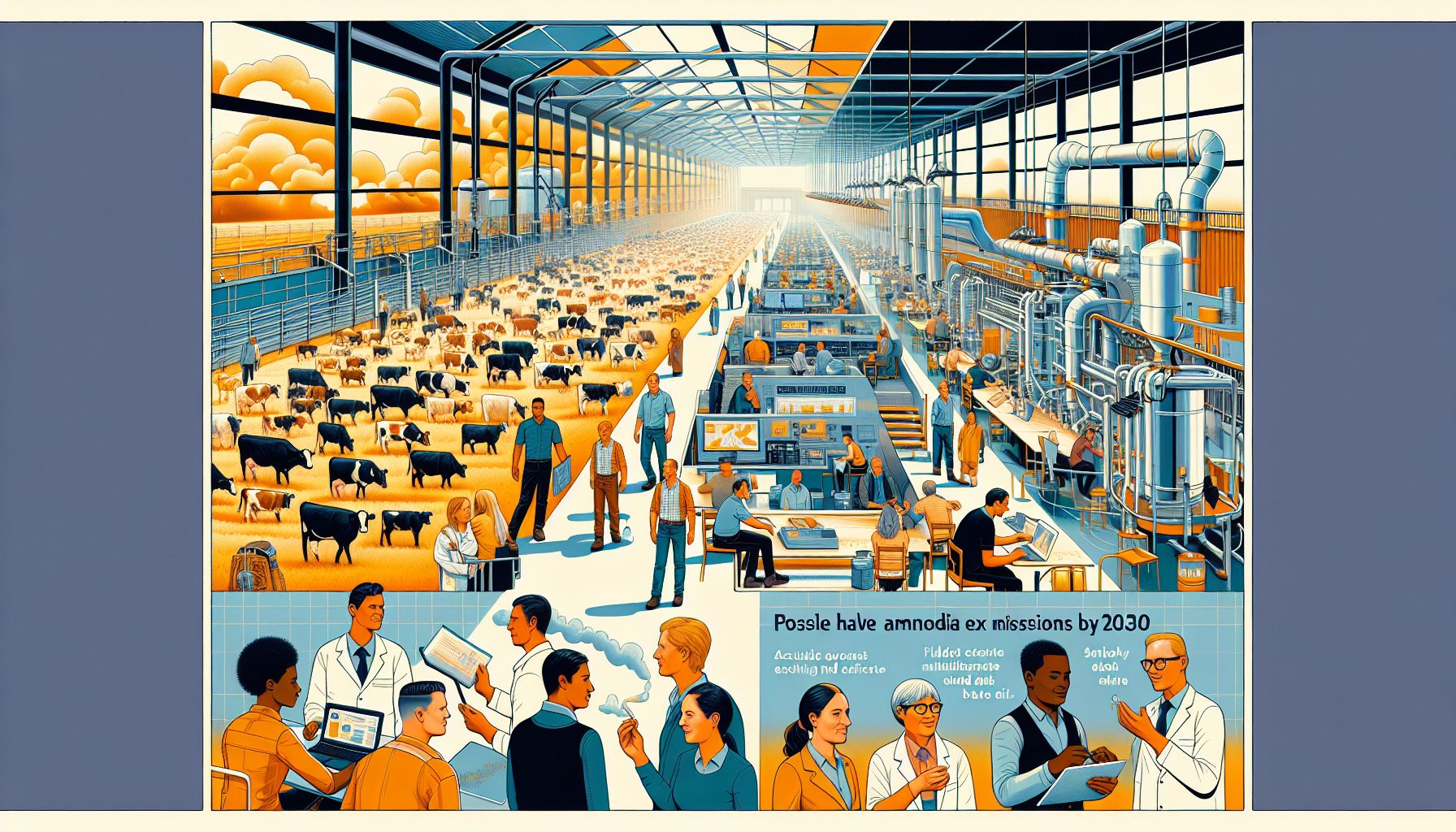Dutch Innovations Aim to Halve Ammonia Emissions by 2030

Wageningen, Tuesday, 21 January 2025.
Wageningen University’s research indicates ammonia emissions in Dutch agriculture could drop by 50% within five years through innovations in livestock management.
Research Findings and Implementation Costs
According to recent research by Wageningen University, implementing practical agricultural innovations could reduce ammonia emissions by nearly 50% over the next five years [1]. The dairy farming sector shows particularly high potential for emission reduction through these innovations [1]. However, the implementation comes with significant costs - an estimated 400 million euros annually for improvements in barn systems, feed management, and manure handling [1]. This would substantially impact individual dairy farmers, with costs potentially reaching 75,000 euros per year per farm [1].
Innovative Solutions in Development
One promising development comes from Nedmag, based in Veendam, which is testing a natural solution using magnesium and calcium to bind nitrogen in manure pits [3]. This innovative approach has shown potential to reduce ammonia emissions by up to 50% through a process called struvite formation [3]. The technology is currently being tested at the Dairy Campus in Leeuwarden in collaboration with Wageningen University, using an automated sprinkler system that applies the treatment directly to stable floors [3].
Government Support and Implementation Challenges
The Dutch government has allocated over 2 billion euros as of November 2024 to support agricultural innovations targeting nitrogen reduction [1]. However, experts like Professor Jan Willem Erisman emphasize that political clarity is crucial for successful implementation [1]. The effectiveness of these innovations relies heavily on widespread adoption and proper implementation by farmers. As Professor Wim de Vries, nitrogen expert and co-author of the research, notes: ‘This report shows that you can achieve the goals if all farmers perfectly implement all available innovations’ [1].
Future Outlook and Requirements
While the technical potential for emission reduction is promising, achieving the full benefits may require additional measures. According to Professor de Vries, reaching emission reduction goals might still necessitate a 20-30% reduction in livestock numbers [1]. Research continues into new solutions, with recent studies showing that combined approaches, such as source segregation with treatment and covering, can achieve up to 99% reduction in ammonia emissions [5].

